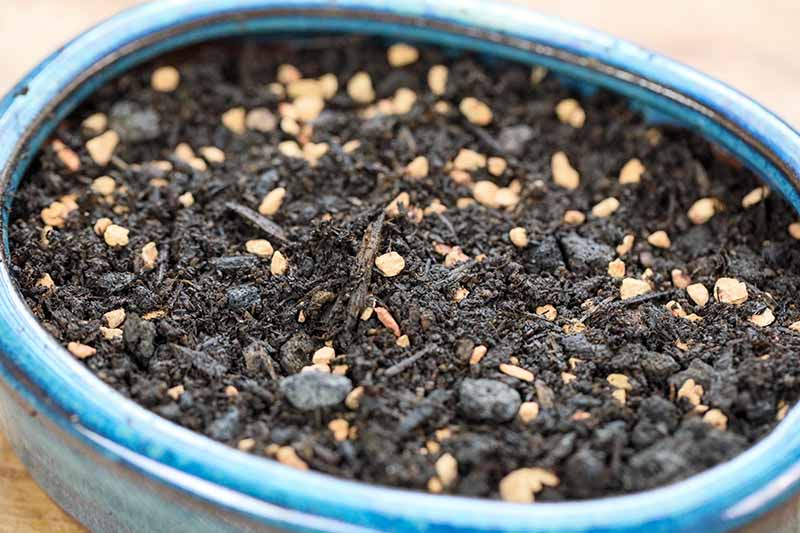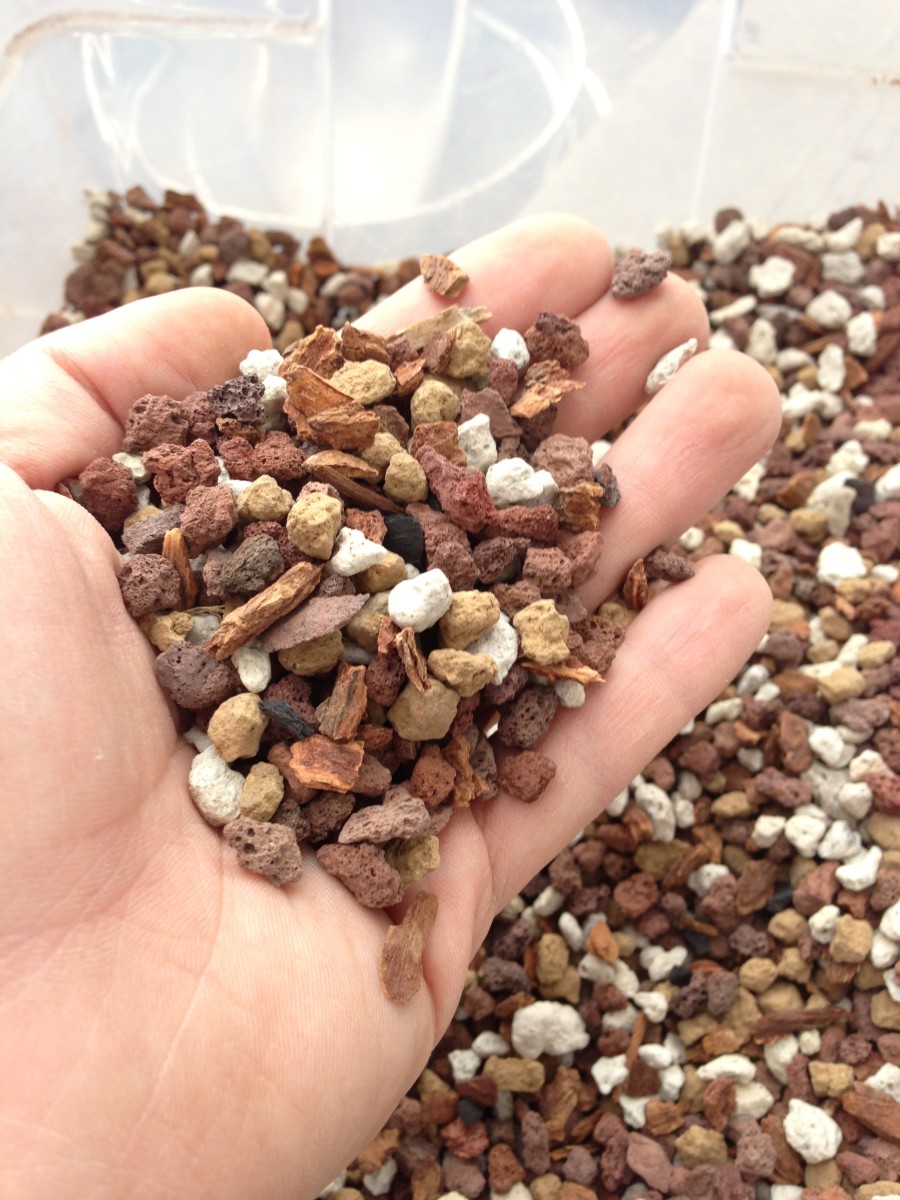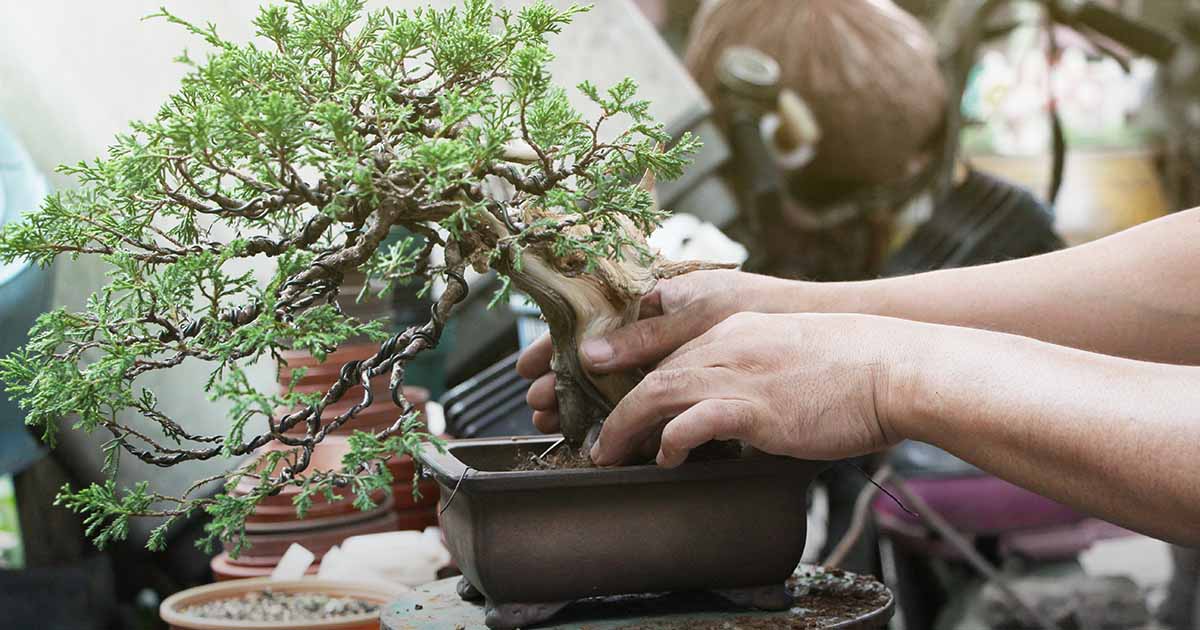In this post, we'll explore the different types of soil and substrates used in bonsai cultivation, including organic and natural and inorganic selections.
We will also learn encouraged soil mixtures for numerous bonsai species, for example deciduous, coniferous, and indoor varieties. From akadama and pumice to moss and river sand, we are going to dive into your intriguing planet of bonsai soil and enable you to realize why It really is a crucial A part of cultivating these exquisite trees.

Bonsai soil
What is bonsai soil?
Bonsai soil is a specialized type of soil that is specifically formulated for growing and maintaining bonsai trees. Unlike regular garden soil, bonsai soil is well-draining and provides the necessary nutrients and moisture balance for the tree's root system. The composition of bonsai soil is carefully designed to meet the unique needs of bonsai trees, ensuring their health and longevity.
The importance of bonsai soil
The choice of soil plays a crucial role in the success of your bonsai tree. The right soil provides optimal drainage, allowing excess water to flow freely and preventing root rot. It also promotes a healthy and well-developed root system, which is essential for the overall health and growth of the tree. Bonsai soil retains moisture while allowing air to reach the roots, striking the perfect balance for the tree's needs. Choosing the right bonsai soil is essential for maintaining a healthy and thriving bonsai tree.
Bonsai substrates
What are bonsai substrates?
Bonsai substrates refer to the different materials that can be used to create the ideal soil composition for bonsai trees. These substrates are carefully chosen to meet the specific needs of different species of bonsai trees and to ensure proper water drainage and nutrient availability.
Different types of bonsai substrates
There are various types of bonsai substrates available, each with its own unique characteristics and benefits. Some common bonsai substrates include:
- Organic materials: These include ingredients such as bark, peat moss, and coconut coir. Organic substrates help retain moisture and provide essential nutrients to the bonsai tree.
- Inorganic products: These consist of parts like pumice, lava rock, and akadama. Inorganic substrates deliver fantastic drainage, making certain that extra h2o would not accumulate within the roots on the bonsai tree.
- Soil amendments: These are definitely substances that are added towards the soil mixture to enhance its Homes. Examples of soil amendments consist of perlite, vermiculite, and sand. They improve the soil's aeration, water-Keeping capability, and nutrient availability.
By knowledge the different types of bonsai substrates as well as their Houses, you'll be able to find the best suited one particular to your bonsai tree's requirements.
Organic or Inorganic Soils
Natural and organic soils for bonsai
Organic and natural soils for bonsai are made up of normal products for instance bark, peat moss, coconut coir, and compost. These materials supply a rich supply of nutrients for the bonsai tree and boost wholesome root enhancement. Natural and organic soils even have great drinking water retention Qualities, making sure which the tree receives sufficient dampness concerning watering sessions. On the other hand, it's important to notice that organic soils may possibly stop working after a while and become compacted, bringing about bad drainage and prospective root troubles.
Inorganic soils for bonsai
Inorganic soils for bonsai include products like pumice, lava rock, akadama, and soil amendments like perlite or vermiculite. These components have great drainage Qualities, protecting against waterlogged soil and advertising aeration throughout the roots. Inorganic soils are preferred by many bonsai fanatics because of their longevity and talent to supply a secure atmosphere for that bonsai tree's root system. Even so, They could need additional frequent watering and additional fertilization, as they do not hold just as much dampness or nutrients as natural soils.
Advantages and disadvantages of utilizing organic and natural and inorganic soils for bonsai
Picking out in between organic and natural and inorganic soils for your personal bonsai tree depends upon various aspects, including the certain species of tree, your climate, and private preferences. Here are the pros and cons of each:
Organic and natural soils:
- Execs: Provide nutrients, excellent water retention, market healthful root enhancement.
- Cons: May possibly stop working as time passes, possible for lousy drainage Otherwise adequately preserved.
Inorganic soils:
- Professionals: Excellent drainage, lengthy-lasting, stable natural environment for roots.
- Negatives: Much less h2o retention, might call for more Regular watering and fertilization.
By thinking of the pluses and minuses of equally natural and inorganic soils, you can make an informed selection according to the specific requires of your bonsai tree.
Soil factors
Important elements of bonsai soil
Bonsai soil is usually made up of 3 primary parts: grit, natural and organic make a difference, and clay. These factors get the job done alongside one another to produce The perfect soil framework for the bonsai tree's root method.
- Grit: Grit, which include sand or perlite, delivers drainage and aeration during the soil. It can help stop waterlogging and will allow air to get to the roots.
- Natural make any difference: Natural and organic issue, which include compost or bark, supplies nutrients into the bonsai tree. What's more, it assists keep moisture and Enhance the soil's Total structure.
- Clay: Clay particles provide some drinking water retention qualities and assistance bind the soil together. However, a lot of clay may result in poor drainage and compaction.
Role of each soil component
Each soil part performs a significant part in developing a very well-balanced and healthy setting to the bonsai tree's roots.
- Grit: Grit offers the mandatory drainage and aeration inside the soil. It prevents the roots from sitting down in stagnant drinking water, minimizing the risk of root rot and endorsing Total root wellness.
- Organic issue: Organic make a difference supplies important nutrients on the bonsai tree. It aids in humidity retention and contributes to the general composition of your soil.
- Clay: Clay particles support bind the soil jointly and supply some drinking water retention capacity. On the other hand, it is important to balance the level of clay to stay away from difficulties like bad drainage and compaction.
By understanding the roles of every soil part, you are able to create a well balanced bonsai soil blend that fulfills the specific requirements within your tree.

Recommended Bonsai soil mixtures
Common bonsai soil mixtures
There are several common bonsai soil mixtures that have been proven effective for various types of bonsai trees. These mixtures typically consist of a combination of inorganic substrates, organic matter, and soil amendments.
Some of the commonly used bonsai soil mixtures include:
- Akadama, pumice, and lava rock: This mixture is popular among bonsai enthusiasts for its excellent drainage and water retention properties.
- Akadama, lava rock, and natural and organic issue: This mixture brings together the many benefits of inorganic substrates With all the nutrient-abundant Attributes of natural make a difference.
- Pumice, perlite, and bark: This mixture offers fantastic drainage and aeration whilst retaining some moisture and giving nutrients.
These are generally just some examples of bonsai soil mixtures, and The best combination will depend on the particular needs of the bonsai tree and your local weather.
Things to take into account when deciding upon a bonsai soil combination
When deciding on a bonsai soil combination, it is important to look at the following website components:
- Species of bonsai tree: Different species have distinct humidity and nutrient prerequisites. Analysis the precise requirements of your respective tree to choose a soil mixture that satisfies its necessities.
- Weather: The climate you reside in can affect the humidity retention Attributes with the soil. Evaluate the typical humidity and temperature in your neighborhood When picking a soil mixture.
- Watering behavior: Your personal watering behavior and schedule must align Together with the soil mixture you select. Some mixtures have to have more Regular watering, while others keep humidity for longer periods.
- Price range: Some soil parts may very well be more expensive than Other people. Look at your budget when picking out a soil mixture.
By taking these variables under consideration, you are able to opt for a bonsai soil combination that gives the most beneficial increasing circumstances on your tree.
Deciduous Bonsai soil
Most effective soil composition for deciduous bonsai
Deciduous bonsai trees, such as maple or birch, have particular soil necessities to aid their growth and overall health. The very best soil composition for deciduous bonsai usually features a combination of organic matter, inorganic substrates, and soil amendments.
A recommended soil composition for deciduous bonsai may include:
- Akadama: Provides great h2o retention whilst permitting for drainage. In addition it releases nutrients little by little after a while.
- Pumice: Promotes aeration and drainage inside the soil, stopping waterlogging.
- Bark or peat moss: Provides natural and organic subject to your soil, offering nutrients and humidity retention.
This soil composition ensures that the roots of deciduous bonsai trees acquire the appropriate balance of humidity, nutrients, and oxygen for optimal development.

Coniferous and Pine soil
Ideal soil mixture for coniferous and pine bonsai
Coniferous and pine bonsai trees have specific soil requirements due to their water retention needs and preference for acidic soil. An ideal soil mixture for coniferous and pine bonsai should provide good drainage while retaining moisture and maintaining the desired pH level.
A recommended soil mixture for coniferous and pine bonsai may include:
- Akadama: Provides excellent water retention while allowing for sufficient drainage. It releases nutrients slowly over time.
- Pumice: Encourages aeration and drainage within the soil, blocking waterlogged roots.
- Peat moss: Provides natural and organic subject and acidity for the soil, producing a great pH stage for coniferous and pine trees.
This soil combination ensures that the roots of coniferous and pine bonsai trees get the appropriate equilibrium of humidity, nutrients, and acidity for his or her certain needs.
Akadama
What is akadama?
Akadama is often a form of clay soil that is definitely widely Employed in bonsai cultivation. It truly is known for its exceptional h2o retention Qualities, which ensure a gradual offer of moisture towards the bonsai tree's roots. Akadama can be prized for its capability to release nutrients little by little over time, supplying a reliable supply of nourishment with the tree.
Advantages of making use of akadama in bonsai soil
Using akadama in bonsai soil gives several benefits:
- Water retention: Akadama has Extraordinary h2o retention Homes, allowing for it to carry dampness with no becoming waterlogged. This ensures that the bonsai tree's roots get a continuous offer of h2o, advertising healthful development.
- Nutrient launch: Akadama slowly but surely releases nutrients in the soil with time, giving a dependable supply of nourishment for the bonsai tree. This lessens the need for Recurrent fertilization and aids maintain a well balanced nutrient profile.
- Aeration: In spite of its water retention abilities, akadama also provides enough aeration into the bonsai tree's roots. It will allow air to reach the root system, avoiding issues for example root rot as a result of not enough oxygen.
By incorporating akadama to the bonsai soil, you may build an exceptional developing environment on your tree, ensuring its overall health and vitality.

Lava rock
How lava rock benefits bonsai soil
Lava rock is a popular component in bonsai soil mixtures due to its excellent drainage and aeration properties. It is typically used in conjunction with other substrates to create the ideal soil composition for bonsai trees.
The benefits of lava rock in bonsai soil include:
- Drainage: Lava rock provides excellent drainage, preventing waterlogging and ensuring that excess water flows freely through the soil. This helps prevent root rot and provides a healthy environment for the roots to thrive.
- Aeration: The porous nature of lava rock makes it possible for air to flow into in the soil, giving oxygen towards the bonsai tree's root system. Suitable aeration is very important for healthful root progress and General tree growth.
- Longevity: Lava rock is a sturdy materials that doesn't stop working effortlessly. This makes sure that the soil composition remains steady with time, decreasing the necessity for frequent soil replacements.
Lava rock is out there in different measurements and shapes, allowing for personalization depending on the specific needs within your bonsai tree and soil necessities.
Differing types of lava rock
You can find differing types of lava rock that may be Employed in bonsai soil mixtures, which includes:
- Black lava rock: Black lava rock is a frequently utilized material in bonsai soil mixtures. It offers outstanding drainage properties and provides an aesthetic component to the general presentation from the bonsai tree.
- Pink lava rock: Purple lava rock is yet another common option in bonsai soil mixtures. It provides similar drainage and aeration benefits as black lava rock but has a definite reddish color that provides Visible curiosity to the container.
The two black and red lava rocks are commonly accessible and can be quickly incorporated into your bonsai soil combination.
Potting
Crucial guidelines for successful bonsai potting
Potting is really a vital procedure in bonsai cultivation, because it immediately impacts the well being and improvement from the tree's roots. Below are a few crucial tricks for thriving bonsai potting:
- Choose the suitable pot dimension: Pick a bonsai pot that enables for root growth while even now delivering a snug suit. Prevent pots which are way too substantial, since they may lead to excessive soil moisture and very poor root progress.
- Use bonsai wire: Secure the tree while in the pot employing bonsai wire to ensure stability. This prevents the tree from shifting or starting to be uprooted during watering or strong winds.
- Trim and distribute the roots: In advance of potting the bonsai tree, thoroughly trim and unfold out the roots. This encourages outward progress and prevents root tangling or root-bound concerns.
- Increase mesh screens: Position mesh screens in excess of the drainage holes at the bottom from the pot to prevent soil erosion and be certain right drainage.
- Use clean bonsai soil: When potting, often use new bonsai soil to supply the mandatory nutrients and best increasing situations for the roots.
By next these vital ideas, you are able to make certain a successful potting procedure and endorse the general well being and advancement of your respective bonsai tree.
The part of bonsai pots in soil moisture Regulate
Bonsai pots Perform a vital role in soil moisture Regulate, right more info impacting the well being and advancement in the tree. Bonsai pots are typically shallow and also have drainage holes, permitting excess h2o to escape and avoiding the soil from turning out to be waterlogged.
The look of bonsai pots promotes evaporation and air circulation, which allows regulate soil humidity amounts. The shallow depth and wide opening on the pot expose much more floor location from the soil for the air, aiding in moisture evaporation. This stops the roots from sitting in excessively damp soil, reducing the chance of root rot along with other water-linked concerns.
On top of that, the drainage holes in bonsai pots allow any surplus water to escape, blocking waterlogged soil and marketing aeration within the roots. Correct aeration is important for the well being and development of the basis procedure, making certain the bonsai tree gets the required oxygen for growth.
Through the use of bonsai pots designed for helpful moisture Management, you'll be able to produce a good environment for the bonsai tree's roots and boost its Total health and vitality.
In summary, deciding on the proper bonsai soil is significant for the good results and health and fitness within your bonsai tree. Comprehending the different sorts of bonsai substrates, the role of natural and inorganic soils, The real key components of bonsai soil, and the different advisable soil mixtures will let you supply the best escalating ailments in your bonsai tree. Whether or not you have a deciduous or coniferous bonsai, incorporating components like akadama and lava rock can boost the soil's drainage and nutrient availability. Moreover, being attentive to potting approaches and employing bonsai pots designed for humidity Handle will even further guidance the thriving development of one's bonsai tree. With appropriate knowing and implementation of bonsai soil methods, you may benefit from the natural beauty and artistry of bonsai cultivation for years to come.
